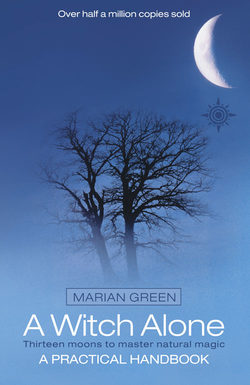Читать книгу A Witch Alone: Thirteen moons to master natural magic - Marian Green - Страница 12
Exercises
ОглавлениеYou may already be encountering difficulties because you are choosing to redirect your life, and walk an uncommon path, but if you are really intent on walking the Old Way you will need to persevere.
Again, the second Moon requires you to carry on research as well as looking at what is going on in the community around you. Look at every tree you see, take every opportunity to witness or join in local well-dressing, bonfire processions or morris dances. They all contain hidden jewels of our forgotten pagan heritage. Also find time to be quiet every day, meditating if you know how, or at least mulling over what you have read, what you have written in your Book of Illumination, and all the ideas flitting like bats through your mind, by day and night.
Here are some more things to do in your second Moon of training. Consider what it means to have a Goddess and a God with many forms. Also read and think hard about religious experience, what it should do or may have done for you in the past. What would you consider a mystical experience to be like?
Divide one page of your Book of Illumination into two columns and write ‘The Goddess’ at the top of one column, and ‘The God’ at the top of the other. Begin by writing in each pairs of names, attributes, symbols or titles, matching the Goddess as Moon with the God as Sun, for example. Sometimes you have three Goddess attributes and only one God name, but you will gradually find balances. You should be able to continue this list through several pages, especially if you take some of the classical deities as well as the local ones.
Sit silently with your eyes closed, relax and then ask the Goddess to show herself to you. See what happens after a few minutes, and write it in your Book. On another occasion ask for the God to appear, and again record what you see or experience. Then ask to see them both.
Draw a large circle (round a plate) and enter the Festivals, taking the top to be north. In segments, add symbols, colours, flowers and all the other things you personally associate with each feast. If you don’t know very much yet, rather than copying from this book, add more after each festival passes.
Look at poetry, more or less at random, in bookshops or the library. Try to devise your own brief invocations for the elements that surround your circle. Work with the basic powers rather than elaborate god-names which you may not fully understand. Try to open up your emotions rather than treating this as an intellectual exercise.
Walk about out of doors and visit somewhere that you would consider sacred, be it religious site, highest local hilltop, ancient monument, old tree or spring of fresh water. Try to discover how and why it feels different to any similar ‘non-sacred’ place. Relax with your eyes closed and stretch your senses.
Here are a selection of books to look out for:
Robert Graves, The White Goddess (Faber)
Marian Green, A Harvest of Festivals (Longman, out of print)
Marian Green, Natural Witchcraft (Thorsons)
Miranda Green, The Gods of the Celts (Alan Sutton)
William James, Varieties of Religious Experience (Penguin)
Caitlín Matthews, The Elements of the Goddess (Element Books)
Don’t expect any of these books to be a very easy read, nor do any of them explain exactly about the work of Old Village Witch or Cunning Man because there is very little written about them, except as parts of learned studies by folklorists, but they are a treasure house of useful ideas.
